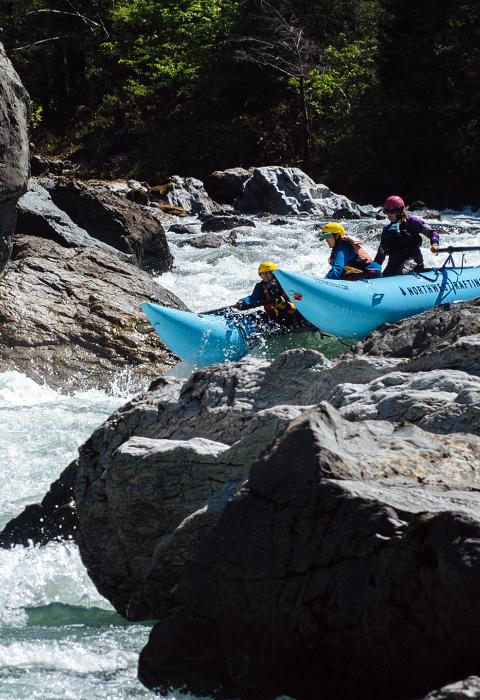Illinois River
Oregon
Located in southwest Oregon, the designated segment of the Illinois River flows from the Rogue River-Siskiyou National Forest boundary to its confluence with the Rogue River (also designated), a distance of 50.4 miles. Congress added southwest Oregon’s Illinois River to the National Wild and Scenic River System in 1984, recognizing its nationally outstanding fisheries, water quality, scenery, recreation, and botanical values. The importance of the designation can be seen today in the visitors who travel along the river’s scenic section, where thousands seek the relief of its clear waters during hot summer days. The Illinois River shines as one of the West’s premier whitewater rivers and as a wild salmon and steelhead refuge.
Designated Reach
October 19, 1984. From the boundary of the Siskiyou National Forest downstream to its confluence with the Rogue River.
Outstandingly Remarkable Values
Botany
The river supports rare and diverse plant communities. Some of the plants and wildflowers are common, and others are rare adaptations to the local serpentine geology. The California lady’s slipper is a rare orchid found in northern California and southern Oregon. Each stem can have up to 21 flowers that are fertilized by trapping insects in their pouch (or slipper). Other notable species include Tolmie’s star tulip, rock cress, Kalmiopsis leachiana, Indian rhubarb (umbrella plant), wild iris, butterwort, pitcher plant, Indian paintbrush, lupine, phlox, monkeyflower, and camas.
Fish
The Illinois River is a world-class native salmon and steelhead river. It is significant in the variety and numbers of salmonid and other species, including coho and chinook salmon, winter steelhead, cutthroat trout (three life histories), Pacific lamprey, and green sturgeon.
In the 1970’s, approximately 25,000 salmon and steelhead were caught by sport fisherman each year. The Illinois contributed another 85,000 salmon annually to offshore commercial fisheries. However, as with all West Coast rivers, numbers have declined.
The Illinois is one of the few rivers on the West Coast where there is no hatchery supplementation program. On the Illinois River, you can still watch the age-old spectacle of wild salmon jumping natural barriers in their ritual return to natal spawning grounds, where they reproduce and die.
Recreation
The river offers marvelous recreation opportunities, including whitewater that provides plenty of excitement for small rafts and kayaks. The wild section flows through a steep canyon for 29 miles between Briggs and Nancy Creeks, featuring 150 rapids of which 11 are Class IV and one is Class V. This section is reputed to be the most remote, inaccessible river segment in the lower 48 states. Permits for floating the wild section of the Illinois are necessary year-round, but are not restricted, and there is no fee. The primary boating season is March through mid-May.
Scenery
The river provides unity to the scenic experience, yet it is composed of an unlimited variety of elements. The variety stems from the water itself and is enhanced by the diverse and spectacular mountain backdrops.
Water Quality
The exceptional color (blue-green) and clarity (allowing viewing to 15 feet or greater) of the waters of the Illinois are outstanding. The water quality contributes to the exceptional habitat for the fish and botany communities in the river corridor, as well.

